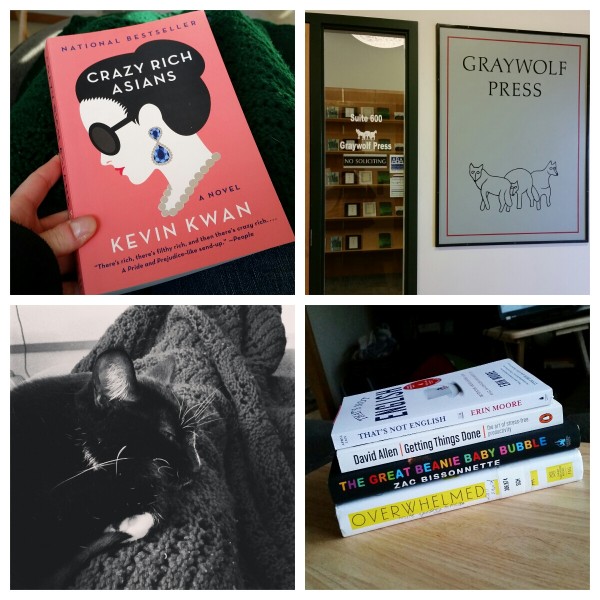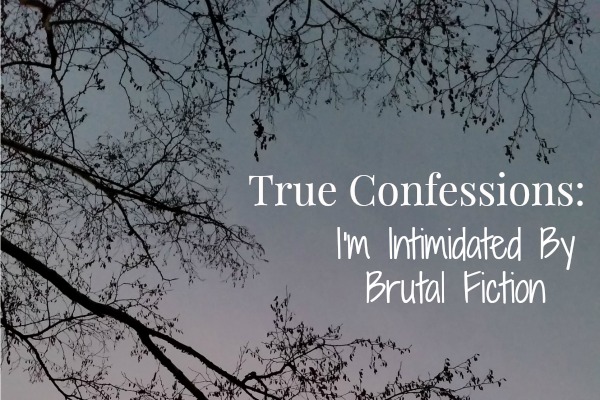Over the last couple of weeks, I found myself drawn back to some books that I know fall right in the middle of my reading wheelhouse — well-reported nonfiction on quirky subjects. In this case, both The Great Beanie Baby Bubble and The Monopolists use stories about the cutthroat business of toys to explore large questions in history, economics and American culture. I can’t wait to tell you about them both.
The Great Beanie Baby Bubble by Zac Bissonnette
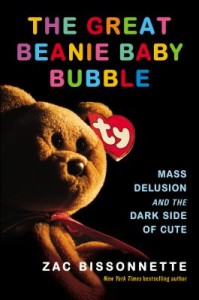 As a fifth grader, I was totally obsessed with Beanie Babies. During the height of my mania, my best friend and I staged an elaborate Beanie wedding between two of our Beanie Babies, George the Gorilla and Bessie the Cow, that included tiny cakes, carefully chosen music, and many, many, many Beanie Baby wedding guests.
As a fifth grader, I was totally obsessed with Beanie Babies. During the height of my mania, my best friend and I staged an elaborate Beanie wedding between two of our Beanie Babies, George the Gorilla and Bessie the Cow, that included tiny cakes, carefully chosen music, and many, many, many Beanie Baby wedding guests.
The joy of play is not what led to the massive obsession with Beanie Babies that characterized much of the years 1996 to 1999. Zac Bissonnette writes about this period, as well as enigmatic and unpleasant Beanie Baby creator Ty Warner in The Great Beanie Baby Bubble: Mass Delusion and the Dark Side of Cute.
This book is totally awesome. It has, no joke, some of the best quotes from interviews that I’ve ever read in a reported work of nonfiction — a testament, I’d guess, to both what a good reporter Bissonnette is and to how much people who worked with Ty Warner actually hate him now. Warner declined to be interviewed for the book, but I think Bissonnette’s reporting paints a fairly accurate (and sometimes sympathetic) portrait of a man who is best known for his creativity, ruthlessness and aptitude for persuasion.
In addition to capitalizing on the nostalgia of Beanie Babies, Bissonnette uses the Beanie Baby craze to look more broadly at consumer economics issues like speculative markets and the way behavioral fallacies lead to bad economic decisions. The market forces and personal choices that led to the rise and crash of Beanie Babies are the same issues that led to the Internet stock bubble and, even more recently, the mortgage-backed securities that led to the economic collapse of 2008.
The Great Beanie Baby Bubble is a heck of a fun read, as well as a smart look at some important issues in economics that consumers would benefit from understanding better. I tore through this one in a single day.
The Monopolists by Mary Pilon
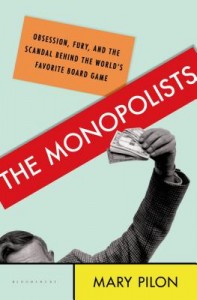 The Monopolists: Obsession, Fury, and the Scandal Behind the World’s Favorite Board Game by Mary Pilon is so perfectly in my nonfiction sweet spot that I could have written it myself. And I wish that I had, because The Monopolists is pretty great.
The Monopolists: Obsession, Fury, and the Scandal Behind the World’s Favorite Board Game by Mary Pilon is so perfectly in my nonfiction sweet spot that I could have written it myself. And I wish that I had, because The Monopolists is pretty great.
In this book, journalist Mary Pilon shares the little-known history of Monopoly. As it turns out, the history of the game that Parker Brothers has tried to sell — unemployed salesman Charles Darrow came up with the idea for the game alone during the Great Depression — ignores the long history the game had in the public domain. And, even worse, it ignores the female activist who came up with one of the earliest versions of the game, Lizzie Magie.
In addition to bringing to light a woman who has had her story nearly erased, the book is great because it situates Monopoly — as well as the game’s predecessors and followers — within the cultural and economic contexts of United State history. Lizzie Magie’s first version, The Landlord’s Game, was inspired by the single tax system at the turn of the century. Monopoly as we know it took off during the Great Depression as a way for people to live large while life was tough, while Anti-Monopoly was a response to the economics of the 1970s. And board games in general became popular as part of a larger cultural shift that allowed for more leisure time and family time.
The Monopolists is great as a cultural history, a legal “thriller,” a feminist exploration and a primer on the competitive world of board game development. I highly recommend it.
What are some of your favorite books about the business of toys?
 Earlier this month, Trish (Love, Laughter and a Touch of Insanity) invited book bloggers to participate in A Day in the Life, a snapshot of life at the moment tracked throughout a single day. I decided to track my day on Monday, March 23 — a day that ended up being a pretty average, if rather long, day in the life of a small town newspaper editor.
Earlier this month, Trish (Love, Laughter and a Touch of Insanity) invited book bloggers to participate in A Day in the Life, a snapshot of life at the moment tracked throughout a single day. I decided to track my day on Monday, March 23 — a day that ended up being a pretty average, if rather long, day in the life of a small town newspaper editor.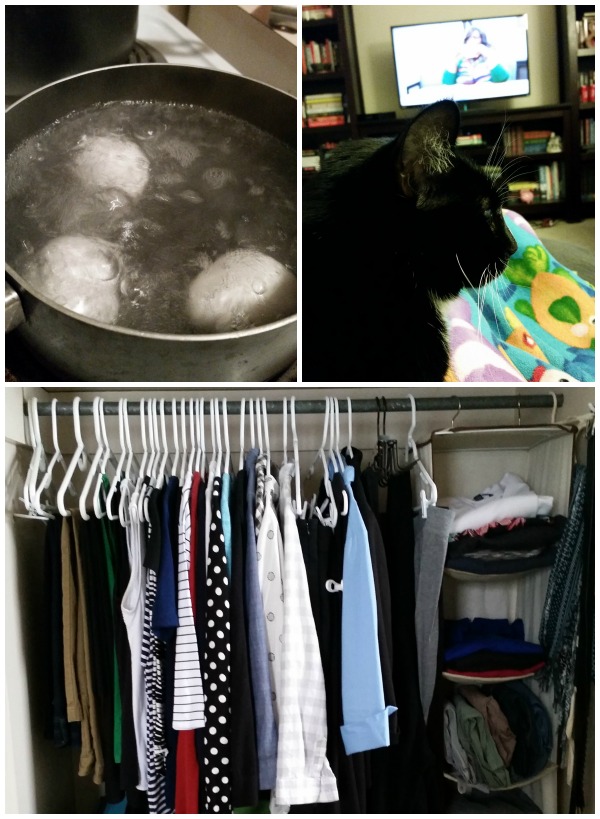

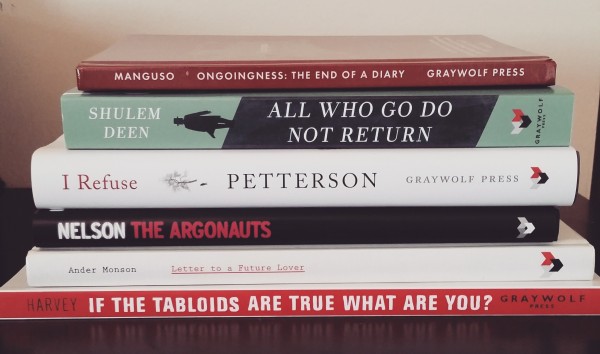
 As a fifth grader, I was totally obsessed with Beanie Babies. During the height of my mania, my best friend and I staged an elaborate Beanie wedding between two of our Beanie Babies, George the Gorilla and Bessie the Cow, that included tiny cakes, carefully chosen music, and many, many, many Beanie Baby wedding guests.
As a fifth grader, I was totally obsessed with Beanie Babies. During the height of my mania, my best friend and I staged an elaborate Beanie wedding between two of our Beanie Babies, George the Gorilla and Bessie the Cow, that included tiny cakes, carefully chosen music, and many, many, many Beanie Baby wedding guests. The Monopolists: Obsession, Fury, and the Scandal Behind the World’s Favorite Board Game by Mary Pilon is so perfectly in my nonfiction sweet spot that I could have written it myself. And I wish that I had, because The Monopolists is pretty great.
The Monopolists: Obsession, Fury, and the Scandal Behind the World’s Favorite Board Game by Mary Pilon is so perfectly in my nonfiction sweet spot that I could have written it myself. And I wish that I had, because The Monopolists is pretty great.